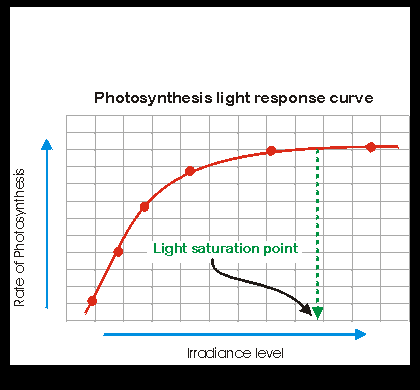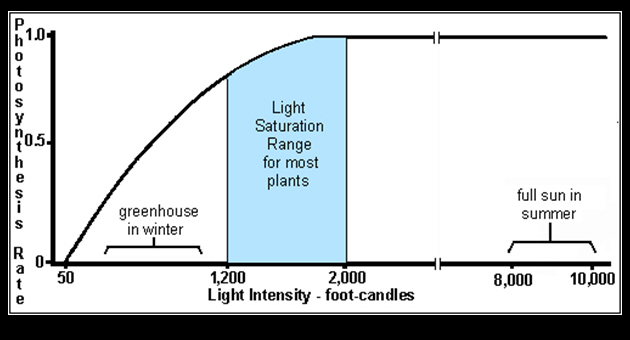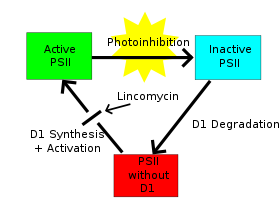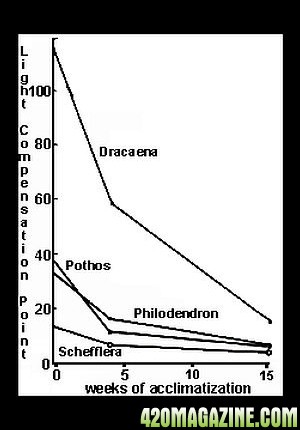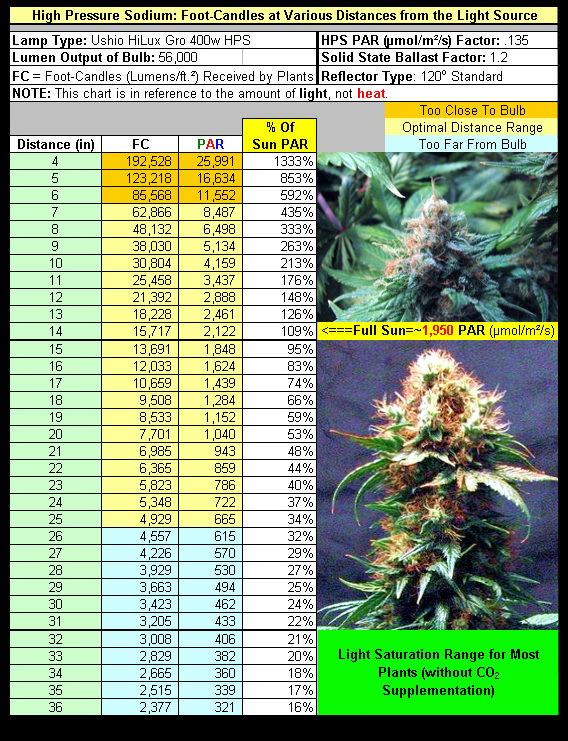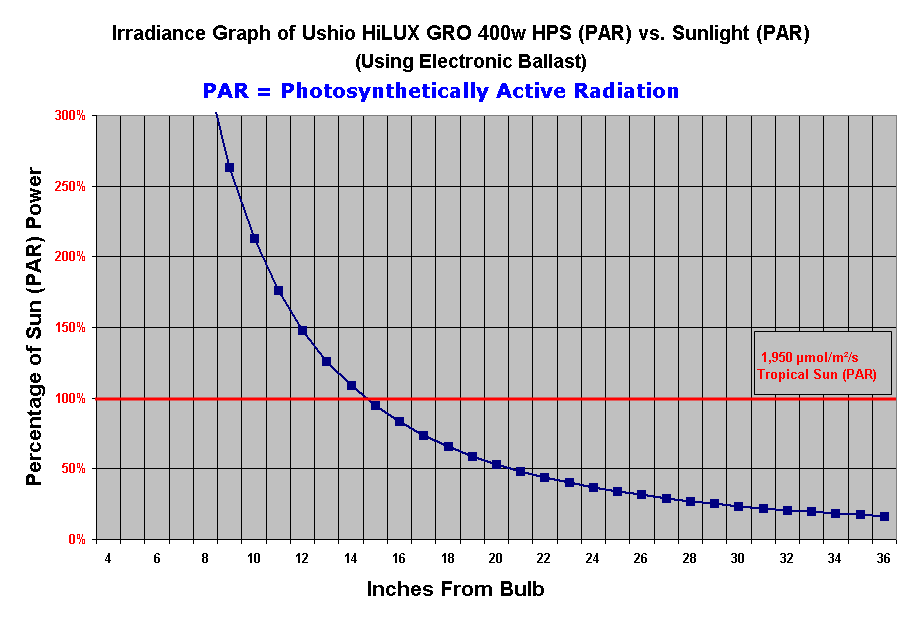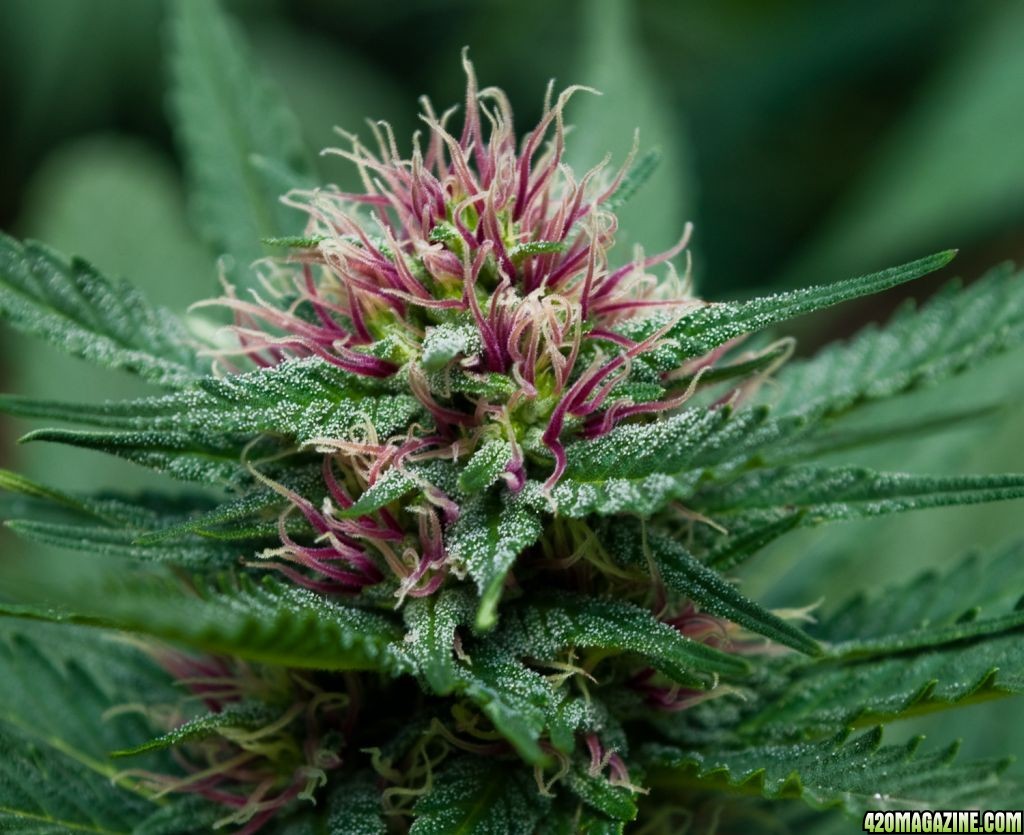Re: 420 Cannasumer Reports Competition - GrowLEDHydro 300w LED vs. 400w HID
Hi SS. Just wanted to let you know I follow this thread everyday. Love the knowledge and experience that I am gaining from this. I might not input to much since I was taught that the best way to learn is to sit back watch and listen. In this case read. One of these days I hope to help others on here like you guys do. Just wanted to let you know that all this extra work you and others put into this does not go unappreciated. Unselfish people like yourself and many on this forum are what this country needs. It's sad that the ignorance of people and the negative propaganda put forth on this subject alienates so many people from enjoying one of greatest gifts we have been given on this earth. Good day to all and thanks for everything. And "We're nothing but a bunch of stoners." If they only knew.
Well said.
I've always found the term 'stoner' to be mildly offensive myself, not simply as a descriptive. Connotations of being lazy, useless, and not contributing to society, or thereabouts. I've found a person's predilection or predisposition for or against having any particular (negative) character or behavioral trait to be largely independent of their propensity to smoke cannabis. There are some darn useful and vital folks out there (and in here) that happen to light one up from time to time. It's about time that
the prosecution ends the persecution.
(For a second there, that last line makes me sound like either Al Sharpton, Dr. Cornell West...or Jesse Jackson.
Rhymin' in Reason, as Gator likes to say...)
Here is a good little read...
DN you have good timing, as always...was just workin' up somethin' in my (admittedly scarce) free time (see below), and you give the perfect lead-in for it.

I know you've grown with both HID and LED in the 300-400w range, and that you're a straight-shooter, so I value your input...
good stuff dog, thank you.
Several weeks back on another forum I ran across someone trying to pump about 400w of HID (MH) into little more than a square foot of space (to see if he could break the ~1 sq ft challenge), and very kindly explained to him why his <0.1g/watt yield would improve drastically (and his root rot would disappear) if he actually used
less light in his space.
Bel has talked about dose-response curves (DRCs), and
photoinhibition caused by oversaturation before, too; to wit:
Ok, so there is a saturation level reached by all plants in response to light. Well,
how much is that, usually? Let's take a look:
In nature, full sunlight actually provides almost
5x the amount of light at which even the most light-tolerant plants experience saturation:
I tend to think that (some strains of) mj are a bit higher than that upper range myself, but those are pretty typical (in the absence of CO² supplementation).
Ok, so around
~2000 foot-candles in natural sunlight. How much is that in PAR (PPFD - Photosynthetic Photon Flux Density), exactly? (Expressed in micromoles of photons per meter squared per second, i.e.: µmol/m²/s)
Recall that
PAR varies with the type of lighting, and that a Factor (multiplier x the foot-candles value) is used to indicate how efficient any particular light source is in terms of PAR delivered. These factors for common lighting types are, generally speaking, as follows:
1) Sunlight = 0.195 micro mol/m²/s/ft.-can (or 5.13 ft.can/micromol/m²/s)
2) Incandescent Light = 0.219
3) Cool-White (CW) Fluorescent = 0.137
4) High Pressure Sodium (HPS) ~ 0.129-0.131
5) Metal Halide (MH) ~ 0.144-0.152
So in the case of
light saturation above, in natural sunlight = (2000 f-c x 0.195 =)
390-400+ PAR.
That's it. If you could deliver that amount consistently and evenly to your plants (and it didn't vary throughout their lifetime), you wouldn't need much more.
Ever.
(There's a way to do just that, using
intra-canopy LED lighting. In fact, you can grow plants much taller than you ever could with HPS using that method - but I wouldn't, for the same reasons as
bel. Short and stocky just produces better overall.)
----
What about that of (a similar intensity to)
100% Full, Natural Sunlight (at 10,000 foot-candles and 1,950 PAR (µmol/m²/s))? For a 400w, normal spectrum HPS on a (magnetic) ballast and standard reflector, in ideal conditions, that equivalent PAR is reached at a distance of roughly ~
12-13" beneath the bulb.
Remember, that's still
five times the saturation rate for even the
hardiest of plants! (of which mj falls into that category)
Now out in nature of course, the sun isn't always at it's maximum, and plants have to adjust to different radiant intensities throughout the day, parts of the plant are shaded from above, and the like.
----
Not to re-quote myself, but
the following is what we're always trying to avoid (in regards to having too much light):
...The effect is over-stimulation of the reaction centers and antenna complexes and increased flavonoid (anthocyanin) and carotenoid production, but those processes (e.g.
Non-photochemical quenching (NPQ)) basically
take energy away from the building of plant tissues we're interested in. I'd rather not put the plant under additional stress so it can focus on making flowers instead.
Instead of furthering the machinery of photosynthesis, too much PPFD simply enhances the creation of prolonged singlet Oxygen and triplet states for Chlorophyll (in Photosystem II, mainly) resulting in
oxidation and
photoinhibition, as free radical Oxygen starts running around the system creating havoc. Enough of that can cause
bleaching (breakup of the Chromophores), changes in pH gradients across cell membranes, and worse.
In short,
the plants are directing too much energy into creating 'sunscreen' (carotenoids and flavonoids) in an effort to keep from 'burning' (from light, not heat) - at the expense of creating a larger useful biomass (calyx to leaf ratio - i.e. buds).
The
D1 protein is instrumental in the repair and 'recharging' of PhotosystemII (PSII), allowing it to 'reset' and continue with photosynthesis. Note that this repair process
continually takes place at all light levels, in direct proportion to the intensity received. (Contrary to popular opinion, light saturation doesn't 'start' at a particular irradiance level, and before which the plant was absorbing all of the light without degredation - in actuality, it simply shows where the (continuing and increasing) degradation and re-synthesis of D1 cannot keep pace with the incoming light levels, and this is equivalent to where photoinhibition is said to take place.) The proteins involved in PSII repair simply can't keep pace with the 'demand' brought on by high irradiance levels:
Here's a study that might shed some more light (no pun intended) on this process:
Photoinhibition and D1 Protein Degradation in Peas Acclimated to Different Growth Irradiances
That's what you've got with your current setup.
Indoors, we have the luxury of delivering
consistent (over a period of time) light levels for each hour of the 'day'; unfortunately, they're not at the same
intensity, but vary by distance, as we all know.
We really tend to put our plants through the ringer indoors. Many of us either end up
1) blasting the tops of our garden with several times full outdoor sunlight, while still providing the bottoms with sufficient intensity -
or, we
2) keep the tops at a reasonable (vs. full sunlight) level, and the
lowest parts are starving for light.
On top of that, if a plant grows several inches in a day, close up to the light source, this becomes problematic, to say the least. Go from 6" to 3" distance in a day, and you've just
quadrupled (400% increase!) your plant's exposure.
Ouch!
Think your plants can produce enough extra 'sunscreen' in a day to keep photoinhibition from occurring?
Not a chance. Hello,
oxidation -
bye bye, colas--!

----
So let's say the tops of your plant starts ~12" from the light. It gets used to that intensity, and the leaves directly underneath - which stay put - produce enough 'sunscreen' for that intensity.
Then, as the plants grow upwards, you naturally raise the light - and the lower parts need to lose that tan (get pasty again

) if they're going to absorb enough photons to fuel photosynthesis for leaves at that height. And then, they get shaded. And those auxins keep gettin' redistributed again to the younger kids, too.
And we do this over and over again (tops growing into the light, fire/frost, tan/pasty, bottoms keep losing intensity, etc.)
The plant can adjust/re-deploy some of the 'sunscreen' to a certain extent - but others (esp. in the vacuoles near the surface, and some fixed to the light-gathering antenna complexes) are stuck there upon creation. Acclimatization takes awhile, and is never fully 'over':
Is it any wonder why many folks fry the tops, and the bottoms often don't produce anything worth mentioning?
And, our plants end up
screaming like Naomi Campbell having to fly Coach?!?! If someone stuck me in a microwave and hit the full power button, I'd have smoke coming out of my ears like Uncle Fester, too...
That's why I
much prefer horizontal canopies like ScrOG. Easy to keep light levels within the good range without having 'em at either extreme.
----
A few years back,
CaliGrower put out a few lighting charts for HIDs with standard bulbs and magnetic ballasts. While they showed idealized foot-candle values (real world levels tend to be a bit lower), they were actually pretty useful overall as
guidelines for a lot of folks. I believe they ended up in the Cannagrower Bible, too...
Haven't seen any updates using Enhanced Spectrum (ES) bulbs and Electronic Ballasts, so I decided to
whip up a few quick charts/graphs of my own from scratch, pertinent to this grow (or anyone else using ES bulbs and E.B.'s).
The HPS bulb data I used came directly from the
Ushio Website.
Lumatek claims that their electronic ballast produces 'up to 30% more light than a standard magnetic ballast'; from what I've seen, an
additional 20% is not out of the question - and that's what I modified the foot-candle data by (
'Solid State Ballast Factor') below.
(That doesn't take into consideration Lumatek's 'Super Lumen' switch, either, which is supposed to boost output by another ~10%. Wonder how that changes the actual, real-world levels? Hmmm...)

The chart is based on using a standard 120° horizontal (double parabola) reflector. Since we're only doing one wattage, I added the PAR (µmol/m²/s) data and also used it to calculate the multiple (or fraction thereof) of
HPS PAR vs. Full (Equatorial) Sunlight, expressed as a percentage.
The
PAR Factor I used for the ES bulb is
0.135; i.e. slightly more than a normal HPS bulb, but nowhere near MH and much closer to the standard HPS side.
A couple of educated estimates, but might actually be pretty close to real-world levels, after factoring in reasonable losses...
----
Anyway,
here it is:
(
Click to enlarge pics)
(If those plant pics look familiar, they should - they're from the 'Sunset Kush' grow.

Some right pretty little girls.)
(It's pure coincidence that the smaller bud just happens to be to the right of the 'excess/too much' lighting area, and the big fat bud is adjacent to the 'good' zone - just a function of how I cropped the images and where they worked out best. Didn't mean anything subliminal by it... Really.

)
I kept CG's color coding system (too close, optimal, too far) based on the old foot-candle cutoffs and translated them to the new distance from the top of the plant. He notes that,
regardless of what the chart says, he wouldn't run a 400w light any closer than 7" (or a 1000w closer than 12") in any event. (His old chart goes into the 'red' zone at 5" for a 400w on a magnetic ballast - the one above starts at 6".) Translated to the new #'s, that same (go/no-go) distance is reached
right around 8.5"-9" away.
There are two
bold black lines also. The
first (between 14" and 15") marks where the
HPS produces the equivalent to Full Sunlight PAR (black text/yellow background notation on the right between the plant pics), while the
second (between 31" and 32") shows the upper limit for light saturation without CO2 (2nd graph I posted with the light blue band) , right around
400+ µmol/m²/s PAR (text with green background).
Yep: in the absence of having produced all that 'sunscreen' early on and without CO2, that's about all the light you'd need, to grow your plants, if you could deliver it at constant levels to all parts of the plant. Above that level, outside of perhaps some better absorption of green-yellow light (see the Mythbusters thread) our plants simply shift focus into creating antioxidants and the like, instead of strictly fueling photosynthesis.
(
With 'sunscreen', however, you need higher levels to penetrate into the leaf and properly fuel photosynthesis, as attenuation and absorption occurs from all the extra anthocyanins and xanthophylls present.)
It's worth noting that, because of the different PAR conversion factors of HPS vs. Sunlight,
you need 44% more foot-candles--! to produce the equivalent PAR of natural sunlight, at any particular intensity.
So instead of 10,000 F-C, HPS delivers 100% of the Sun's PAR at
14,400 F-C!
Some of that extra light gets reflected;
and, most of the rest gets absorbed as (but is
not used to fuel photosynthesis) - and converted to -
HEAT.
-----
Here's a nice graph I made from the chart data that puts the above into focus (
HPS PAR vs. Sunlight as a Function of Distance):
(
Click to enlarge pics so the text isn't all fuzzy - wide graph!)
The
bold red line at 100% (y-axis) shows where Full Natural Sunlight PAR is crossed from increasing/decreasing distance.
I had to cap the y-axis at 300% so there was still sufficient delineation at lower irradiances/higher distances, so the first point of the graph shows the HPS at
9" away (263% x PAR of Natural Sunlight), and almost
~13x light saturation levels!
<Bloody Hell...>
Dogsnova mentioned 12" as being a good distance. For this light, we get roughly:
148% of Full Sun PAR and
21,392 foot-candles! (more than
2x that of full sunlight!). That's still a heck of a lot of light - and realistically,
probably a good upper limit, if plants can be kept relatively short, also. Maybe 10" in a pinch, but that's pushing it. Hope the plants don't make any sudden moves at that level--!
----
Again, real-world levels might be a
bit lower from various losses. Measuring directly under the light with a quality light meter would be better, but these might be useful as a 'rule-of-thumb', for grows using Enhanced Spectrum HPS and Electronic Ballasts - which are becoming more of the norm nowadays.
Hope that helps...enjoy! :icon_cool
Regards,
-TL



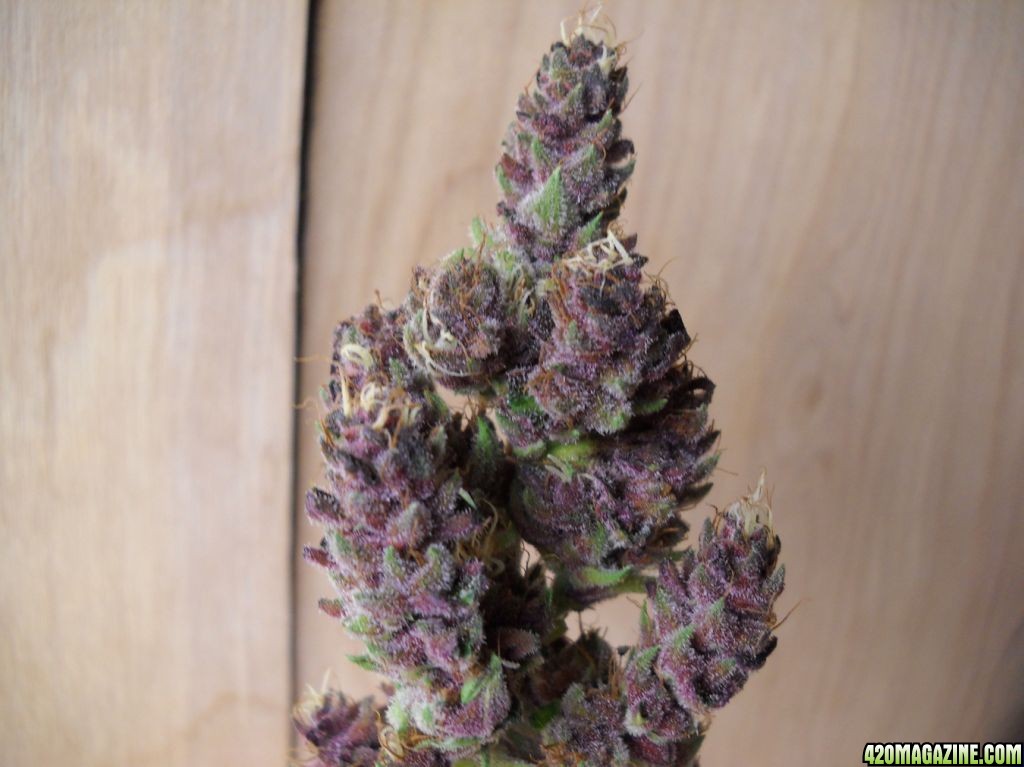





 Easy to start the plants closer in and move 'em towards the walls as required. No worries there. Nature loves symmetry, too.
Easy to start the plants closer in and move 'em towards the walls as required. No worries there. Nature loves symmetry, too. 

